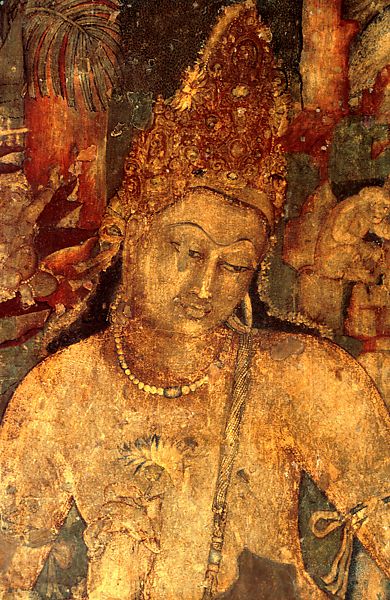Static Quiz 14 October 2022
Quiz-summary
0 of 5 questions completed
Questions:
- 1
- 2
- 3
- 4
- 5
Information
Static Quiz 14 October 2022 for UPSC Prelims
You have already completed the quiz before. Hence you can not start it again.
Quiz is loading...
You must sign in or sign up to start the quiz.
You have to finish following quiz, to start this quiz:
Results
0 of 5 questions answered correctly
Your time:
Time has elapsed
You have reached 0 of 0 points, (0)
Categories
- Not categorized 0%
- 1
- 2
- 3
- 4
- 5
- Answered
- Review
- Question 1 of 5
1. Question
Among which of the following languages were patronized by the Jains to preach their doctrines?
CorrectAns;- b) Prakrit
Explanation:-
• The Jainism made the first serious attempt to alleviate the evils of the varna older and the ritualistic Vedic religion.
• The early Jains discarded the Sanskrit language mainly patronized by the Brahmanas.
• They adopted Prakrit language of the common people to preach their doctrines.
• Though religious literature was written in Ardhamagadhi, and the texts were finally compiled in the sixth century A.D in Gujarat at a place called Valabhi, a great centre of education.
• The adoption of Prakrit by the Jains helped the growth of this language and its literature.
• Many regional languages developed out of Prakrit languages, particularly Sauraseni, out of which grew the Marathi language. Incorrect
IncorrectAns;- b) Prakrit
Explanation:-
• The Jainism made the first serious attempt to alleviate the evils of the varna older and the ritualistic Vedic religion.
• The early Jains discarded the Sanskrit language mainly patronized by the Brahmanas.
• They adopted Prakrit language of the common people to preach their doctrines.
• Though religious literature was written in Ardhamagadhi, and the texts were finally compiled in the sixth century A.D in Gujarat at a place called Valabhi, a great centre of education.
• The adoption of Prakrit by the Jains helped the growth of this language and its literature.
• Many regional languages developed out of Prakrit languages, particularly Sauraseni, out of which grew the Marathi language.
- Question 2 of 5
2. Question
With reference to the religious history of India, consider the following statements:
1. Sautrantika and Sammitiya were the sects of Jainism.
2. Sarvastivadin held that the constituents of phenomena were not wholly momentary, but existed forever in a latent form.Which of the statements given above is/are correct?
CorrectAns;- b) 2 Only
Explanation;-
• The Sautrantikas and Sammtiyas are Buddhism sects.
• The Sautrāntika or Sutravadin were an early Buddhist school generally believed to be descended from the Sthavira nikāya by way of their immediate parent school, the Sarvāstivādins.
• While they are identified as a unique doctrinal tendency, they were part of the Sarvāstivāda Vinaya lineage of monastic ordination.
• The Saṃmitīya were one of the eighteen or twenty early Buddhist schools in India, and were an offshoot of the Vātsīputrīya sect.
• The Sarvastivadins this sect of Buddhism believes that all things exist, and exist continuously, in the past and the future as well as in the present.IncorrectAns;- b) 2 Only
Explanation;-
• The Sautrantikas and Sammtiyas are Buddhism sects.
• The Sautrāntika or Sutravadin were an early Buddhist school generally believed to be descended from the Sthavira nikāya by way of their immediate parent school, the Sarvāstivādins.
• While they are identified as a unique doctrinal tendency, they were part of the Sarvāstivāda Vinaya lineage of monastic ordination.
• The Saṃmitīya were one of the eighteen or twenty early Buddhist schools in India, and were an offshoot of the Vātsīputrīya sect.
• The Sarvastivadins this sect of Buddhism believes that all things exist, and exist continuously, in the past and the future as well as in the present. - Question 3 of 5
3. Question
The Anekantavada and Syadvada is a core theory and philosophy of which one of the following?
CorrectAns;- b) Jainism
Explanation;-
About Anekantavada
• The Anekāntavāda is the Jain doctrine about metaphysical truths that emerged in ancient India.
• It emphasizes that the ultimate truth and reality is complex, and has multiple-aspects i.e theory of plurality.
• It refers to the simultaneous acceptance of multiple, diverse, even contradictory viewpoints.About Syadvada
• All judgments are conditional, holding good only in certain conditions, circumstances, or senses.
• The Syadavada literally means the ‘method of examining different probabilities’.
• The basic difference between them is that Anekantavada is the knowledge of all differing but opposite attributes whereas Syadavada is a process of the relative description of a particular attribute of an object or an event.IncorrectAns;- b) Jainism
Explanation;-
About Anekantavada
• The Anekāntavāda is the Jain doctrine about metaphysical truths that emerged in ancient India.
• It emphasizes that the ultimate truth and reality is complex, and has multiple-aspects i.e theory of plurality.
• It refers to the simultaneous acceptance of multiple, diverse, even contradictory viewpoints.About Syadvada
• All judgments are conditional, holding good only in certain conditions, circumstances, or senses.
• The Syadavada literally means the ‘method of examining different probabilities’.
• The basic difference between them is that Anekantavada is the knowledge of all differing but opposite attributes whereas Syadavada is a process of the relative description of a particular attribute of an object or an event. - Question 4 of 5
4. Question
The Jain philosophy holds that the world is created and maintained by
CorrectAns;- a) Universal Law
Explanation;-
• According to the Jain doctrine, the universe and its constituents (soul, matter, space, time, and motion) have always existed.
• All the constituents and actions are governed by universal natural laws.
• The Jainism does not support belief in a creator deity. Incorrect
IncorrectAns;- a) Universal Law
Explanation;-
• According to the Jain doctrine, the universe and its constituents (soul, matter, space, time, and motion) have always existed.
• All the constituents and actions are governed by universal natural laws.
• The Jainism does not support belief in a creator deity.
- Question 5 of 5
5. Question
The painting of Bodhisattva Padmapani is one of the most famous and oft-illustrated paintings at
CorrectAns;- a) Ajanta
Explanation;-
• The Bodhisattva Padmapani, wall painting found in the cave 1 of Ajanta Caves.
• In Buddhism, a bodhisattva is any person who is on the path towards Buddhahood. In the Early Buddhist schools as well as modern Theravada Buddhism, a bodhisattva refers to anyone who has made a resolution to become a Buddha and has also received a confirmation or prediction from a living Buddha that this will be so.
• The Ajanta Caves are approximately 30 rock-cut Buddhist cave monuments which date from the 2nd century BCE to about 480 CE in Aurangabad district of Maharashtra state of India.
The Ajanta caves have been described by the government Archeological Survey of India as the “The Finest Surviving examples of Indian Art, Particularly Painting”, and consists of about 30 rock cut Buddhist cave monuments dating approximately the 2nd century BCE to about 480 or 650CE. Incorrect
IncorrectAns;- a) Ajanta
Explanation;-
• The Bodhisattva Padmapani, wall painting found in the cave 1 of Ajanta Caves.
• In Buddhism, a bodhisattva is any person who is on the path towards Buddhahood. In the Early Buddhist schools as well as modern Theravada Buddhism, a bodhisattva refers to anyone who has made a resolution to become a Buddha and has also received a confirmation or prediction from a living Buddha that this will be so.
• The Ajanta Caves are approximately 30 rock-cut Buddhist cave monuments which date from the 2nd century BCE to about 480 CE in Aurangabad district of Maharashtra state of India.
The Ajanta caves have been described by the government Archeological Survey of India as the “The Finest Surviving examples of Indian Art, Particularly Painting”, and consists of about 30 rock cut Buddhist cave monuments dating approximately the 2nd century BCE to about 480 or 650CE.







